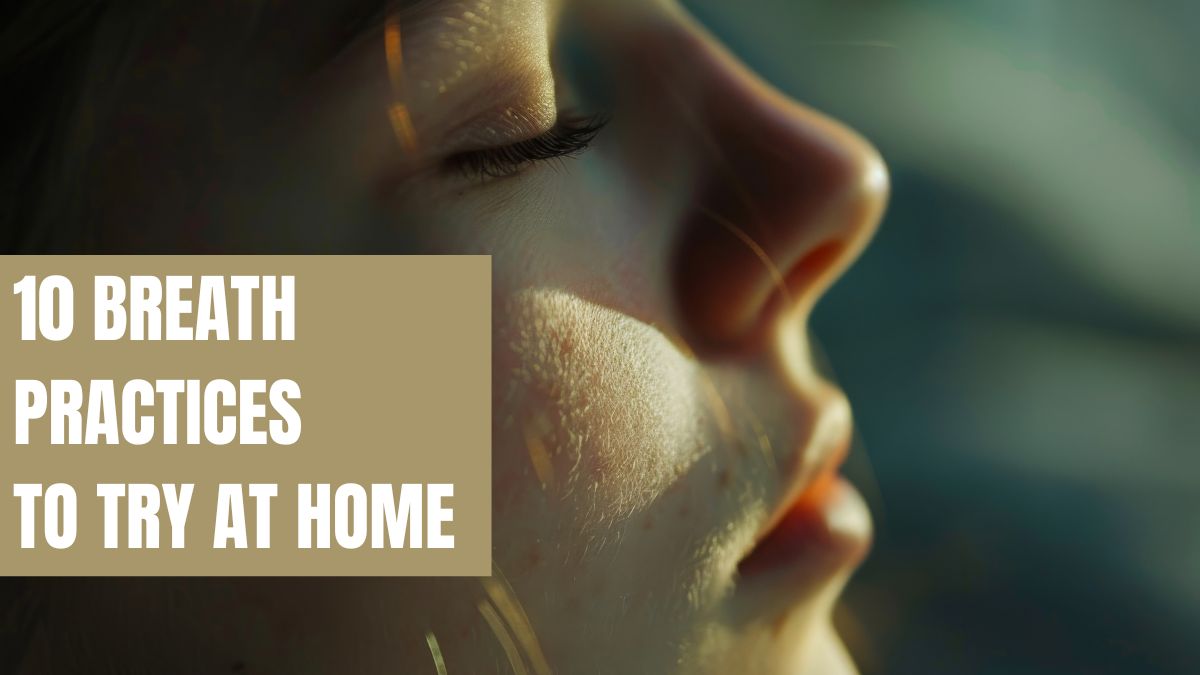Set Yourself Up for Breathwork Success with 10 Try At Home Breath Practices

10 Essential Breathing Exercises
Setting up a home breathwork practice is a simple but powerful way to support your mental and physical well-being. When I started, I didn’t have much guidance, but looking back, I wish I had built a routine earlier. Just like preparing for any new skill, consistent practice makes all the difference. Start small—dedicate a few minutes each day to conscious breathing exercises, creating a peaceful space at home. This daily practice can help you feel more grounded and prepared for whatever life throws your way.Here are ten techniques to help you on your way.
1. Diaphragmatic Breathing
668526af6ce5c_lg.jpg)
Start by focusing on breathing deeply into your belly. Let it expand on the inhale and contract on the exhale. This exercise fully engages your diaphragm, promoting relaxation and improving oxygen exchange. It’s like giving your body a mini-vacation with each breath. Diaphragmatic breathing can be practiced anytime, whether you are lying down, sitting, or even standing. Try incorporating it into your daily routine for a few minutes each morning or evening. You might find that it not only calms your mind but also improves your digestion and reduces tension in your body.
2. Box Breathing
Also known as square breathing, this technique involves inhaling for 4 counts, holding for 4 counts, exhaling for 4 counts, and holding for another 4 counts before repeating. Box breathing is fantastic for developing breath control and calming your nervous system. Picture it as a mental reset button. This method is especially useful during stressful situations. Next time you’re feeling overwhelmed at work or anxious before a big event, find a quiet spot and practice box breathing for a few minutes. You’ll likely feel more centred and focused afterward.
3. Slow Breathing
Try to slow your breathing rate to about 6 breaths per minute. This can yield numerous physical and mental health benefits, including enhanced relaxation, improved wellbeing, and reduced stress. Imagine each breath melting away tension and bringing in calm. Slow breathing can be particularly beneficial before bed, helping you to wind down and prepare for a restful night's sleep. It’s also a great way to start your day with a sense of peace and clarity.
4. Alternate Nostril Breathing
6685275cedc45_lg.jpg)
Close one nostril with your finger and inhale through the other. Then switch nostrils for the exhale. This method balances the breath between both sides of the body, promoting equilibrium and mental clarity. Think of it as balancing your inner scales. This practice, also known as Nadi Shodhana, is a staple in yoga traditions for its balancing effects on the mind and body. Try it for five minutes in the morning or evening to feel more harmonious and clear-headed.
5. Open-Mouth Breathing
Inhale and exhale through your mouth. While this may feel unusual at first, it’s the exact technique we teach in Transformational Breath ® to help release pent-up emotions and tension. It’s like opening the floodgates to let go of what you no longer need. Open-mouth breathing can be a powerful emotional release tool. Use it when you’re feeling stuck or overwhelmed by emotions. Just a few minutes can help you feel lighter and more at ease.
6. Breath Holds
After a normal exhale, hold your breath for as long as comfortably possible. Gradually increase the duration of these holds to build CO2 tolerance and lung capacity. This practice enhances your ability to handle deeper breathwork techniques. It’s like stretching your breath muscles. Breath holds can be challenging but are incredibly rewarding. They teach you patience and control, which are valuable skills both in breathwork and in life. Start with short holds and gradually increase as you become more comfortable.
7. Full Yogic Breath
This technique involves inhaling sequentially into your belly, ribcage, and upper chest, then exhaling in reverse order. Full yogic breath maximises lung capacity and encourages a full, nourishing breath cycle. Picture it as a wave flowing through your body. This technique is also known as the three-part breath and is deeply grounding. It helps you connect with the different parts of your respiratory system, promoting greater awareness and control of your breathing.
8. Physiological Sigh
Take a long, deep inhale through the nose, then take a second shorter inhale before a long, slow exhale through the mouth. The physiological sigh is a powerful technique for rapidly reducing stress and calming the mind. It’s like hitting the pause button on stress. This method can be used anytime you need a quick reset. Whether you’re stuck in traffic, in the middle of a hectic day, or trying to wind down after a stressful event, the physiological sigh can bring instant relief. And it's great for hangovers!
9. 7-11 Breathing
Inhale for a count of 7 and exhale for a count of 11. This breathing pattern helps to activate the parasympathetic nervous system, promoting relaxation and reducing anxiety. Think of it as a lullaby for your nervous system. This technique is particularly effective for calming the mind before sleep. If you have trouble falling asleep, try 7-11 breathing to help your body and mind transition into a restful state.
10. So Hum Breath
So Hum breathing involves silently saying "So" on the inhale and "Hum" on the exhale. This meditation mantra means "I am that" and helps to synchronise your breathing with a calming, repetitive phrase. It’s a simple yet effective way to centre the mind and enhance focus during breathwork. Consider it a gentle reminder of your connection to everything. So Hum is a great practice to start or end your meditation sessions. It can deepen your meditative state and bring a sense of unity and peace.
Tips for Practicing Breathing Exercises
- Start Gently: Begin with shorter durations and gradually increase as you become more comfortable. There’s no rush; ease into it. Remember, breathwork is about finding what works best for you, so be patient with yourself as you explore these techniques.
- Listen to Your Body: If you feel lightheaded or uncomfortable, stop and return to normal breathing. Your body knows best. Breathwork should never be forced; it should feel natural and supportive.
- Consistency is Key: Regular practice will help you become more attuned to your breath and prepare you for more intensive sessions during your breathwork weekend. Think of it as building a solid foundation. Try to set aside a few minutes each day for your breathwork practice, even if it’s just five minutes. Over time, you’ll notice the benefits accumulating.
By incorporating these breathing exercises into your routine, you’ll not only enhance your overall wellbeing but also prime yourself for the deeper, more transformative practices you’ll encounter during an immersive breathwork experience.
Each breath is an opportunity to connect with yourself, to find stillness, and to cultivate inner peace. So, start today. Happy breathing!
Sarah Jons, founder of The Breathwork Teachers, helps people transform their physical, mental, and emotional health through breathwork. With nearly 25 years of experience working and living in student residences at the London School of Economics, Sarah understands the pressures students face. After overcoming personal challenges and working as a Cognitive Hypnotherapist and Life Coach, she discovered the power of breathwork in 2012. In 2014, she co-founded The Big Breath Company, teaching breathwork up to facilitator level. In 2023, she launched The Breathwork Teachers, offering 1-to-1 sessions and on-demand workshops and for groups, teams, and student communities.
Categories: : Breathing Techniques, Breathwork Course, Transformational Breath
 Sarah Jons
Sarah Jons 